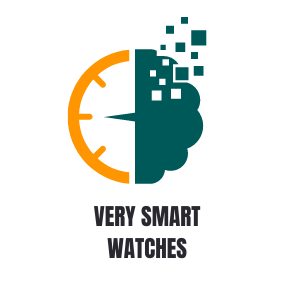Imagine a world where innovation and empowerment merge seamlessly on your wrist, transforming the way visually impaired athletes track their fitness. A fitness tracker designed specifically for this unique group of individuals has emerged, catering to their diverse needs and taking proactive health monitoring to the next level. This device goes beyond simply collecting data, instead offering personalized wellness dashboards, unlocking peak performance, and even detecting pre-diabetes. With the ability to speak to a future where wellness becomes a conversation, this fitness tracker for visually impaired athletes is set to revolutionize the way we approach wearable wellness.
Fitness Tracker for Visually Impaired Athletes
Living an active lifestyle is important for everyone, and this includes visually impaired athletes. Engaging in fitness activities not only improves physical health but also contributes to mental well-being. With the advancements in technology, fitness trackers have become an invaluable tool for athletes to monitor their progress and achieve their goals. In this article, we will explore the importance of fitness for visually impaired athletes, the challenges they face, and the features of fitness trackers designed specifically for their needs.
1. Importance of Fitness for Visually Impaired Athletes
Fitness plays a crucial role in the lives of visually impaired athletes. It not only helps them maintain a healthy weight and cardiovascular health but also enhances their overall well-being. Regular exercise has been linked to improved mood, reduced stress levels, and enhanced cognitive function. Moreover, engaging in physical activities can boost self-confidence and provide a sense of accomplishment for visually impaired athletes. Fitness trackers serve as a constant reminder to stay active and strive for personal growth.
2. Challenges Faced by Visually Impaired Athletes
Visually impaired athletes face unique challenges when it comes to engaging in fitness activities. Navigating unfamiliar environments, ensuring safety while exercising, and maintaining proper form can be difficult without visual cues. Additionally, it can be challenging for visually impaired athletes to accurately track their progress and monitor their performance. These obstacles can hinder their ability to achieve their fitness goals. However, with the help of specialized fitness trackers, these challenges can be overcome.
![]()
3. Features of Fitness Trackers for Visually Impaired Athletes
Fitness trackers designed for visually impaired athletes incorporate various features that address their specific needs. These features aim to provide voice guidance and feedback, tactile feedback and vibrations, GPS and location tracking, heart rate monitoring, step counting, and distance tracking. Let’s delve deeper into each of these features and understand how they enhance the fitness journey for visually impaired athletes.
4. Voice Guidance and Feedback
One of the key features of fitness trackers for visually impaired athletes is voice guidance and feedback. These trackers use audio cues to guide athletes through their workouts, providing information about exercise duration, pace, and intensity. Voice feedback ensures that athletes can stay engaged and motivated during their fitness routines. By providing clear instructions and updates, fitness trackers enable visually impaired athletes to perform exercises with confidence and accuracy.
![]()
5. Tactile Feedback and Vibrations
In addition to voice guidance, fitness trackers for visually impaired athletes also utilize tactile feedback and vibrations. These trackers incorporate vibration patterns and tactile cues that provide real-time notifications and alerts. This allows athletes to receive feedback on their progress without relying solely on visual indicators. Tactile feedback and vibrations serve as a substitute for visual cues, enabling visually impaired athletes to stay informed and make necessary adjustments during their workouts.
6. GPS and Location Tracking
Fitness trackers equipped with GPS and location tracking capabilities are particularly useful for visually impaired athletes. These features allow athletes to track their routes, monitor their progress, and explore new paths without the need for visual navigation. By providing auditory cues and directions, GPS-enabled fitness trackers enable visually impaired athletes to confidently explore outdoor environments and engage in activities like running, cycling, or hiking.
7. Heart Rate Monitoring
Heart rate monitoring is an essential feature in fitness trackers for visually impaired athletes. By accurately tracking heart rate, athletes can understand their cardiovascular exertion levels and adjust their workouts accordingly. This information is crucial for ensuring safe and effective exercise sessions. Fitness trackers with heart rate monitoring capabilities provide real-time feedback, allowing visually impaired athletes to maintain their target heart rate zones and optimize their workout intensity.
8. Step Counting and Distance Tracking
Step counting and distance tracking features in fitness trackers are valuable for visually impaired athletes as they provide a tangible measure of progress and achievement. By accurately counting steps and tracking distances covered, these trackers enable athletes to set goals, measure their improvement, and stay motivated. The data can be accessed through voice prompts, making it convenient for visually impaired athletes to monitor their activity levels and strive for consistent progress.
13. Popular Fitness Trackers for Visually Impaired Athletes
There are several fitness trackers available in the market that cater specifically to the needs of visually impaired athletes. These trackers combine various features to provide a comprehensive fitness monitoring experience. Some popular options include [insert popular fitness trackers for visually impaired athletes]. These devices offer a range of features, from voice guidance and feedback to GPS and heart rate monitoring. It is essential for visually impaired athletes to consider their specific needs and preferences when choosing a fitness tracker that suits their lifestyle and fitness goals.
In conclusion, fitness trackers for visually impaired athletes serve as invaluable tools to enhance their fitness journey. By incorporating features such as voice guidance, tactile feedback, GPS tracking, heart rate monitoring, step counting, and distance tracking, these trackers empower visually impaired athletes to overcome challenges, track their progress, and achieve their fitness goals. With the advancements in technology, visually impaired athletes can now engage in various physical activities with confidence and independence, all while improving their overall well-being.
